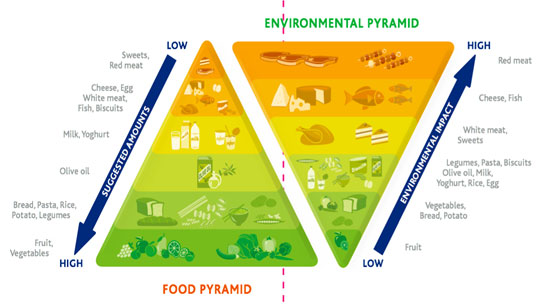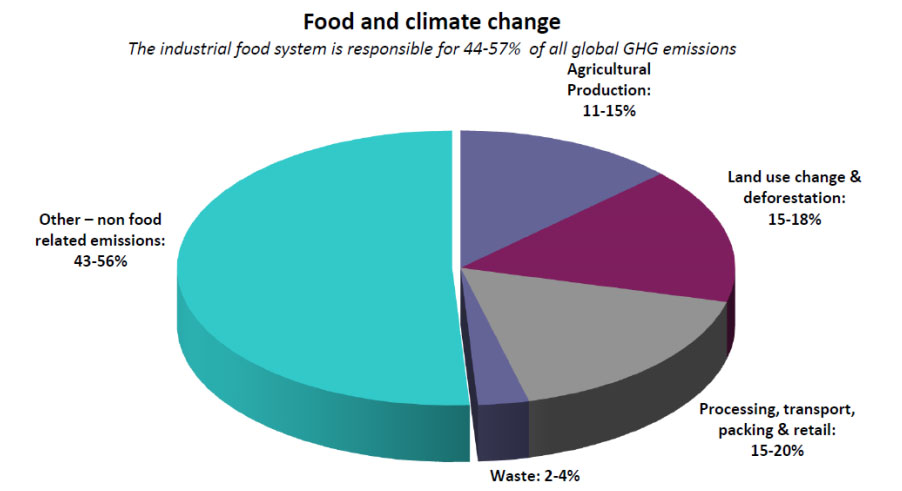Hans Herren, President of Millennium Institute, takes on the challenges in shifting from brown to green agriculture Dr Eva Sirinathsinghji
We have a world with 842 malnourished and 1.5 billion obese people. It is clearly not sustainable and also exhausting the world’s resources, using far too much energy and depleting the land of its natural fertility. A transition towards agro-ecological farming is possible. It will require philosophical, political, agricultural and policy innovations with minimal investments of 0.2 % of global GDP, so says Hans R Herren, President of the Millennium Institute, recipient of the 2013 Right Livelihood award, plus a string of past honours on innovations in food and agriculture. He was delivering the opening keynote at the 1st Forum of Development and Environmental Safety under the theme “Food Safety and Sustainable Agriculture 2014”, 25 - 26 July 2014, in Beijing. If we make this transition, then by 2050, the world will have enough healthy food without losing quality jobs, health or food sovereignty, or the health and resources of the planet.
A fundamental shift from brown to green agriculture is necessary if we are to secure a sustainable future for generations to come. The industrial system that currently dominates the world is unsustainable, and is responsible for widespread health problems both of malnutrition and obesity. Not only is this system unable to successfully feed people, but is also unsustainable at the level of energy consumption. The industrial food system uses 10 calories to produce 1 calorie that is nutritionally empty [1]. This is in contrast to organic farming, which has been shown in numerous agricultural settings to use significantly less energy (see box 1). The high energy needs of industrial agriculture are a major contributor to climate change as well as soil degradation, water shortages and loss of biodiversity, which all exacerbate food insecurity. In addition, it aggravates social problems, with mechanised farming emptying rural areas of people who used to work as farmers, instead of providing quality jobs. As Dr Herren rightly said, business as usual is not an option, the current system in unsustainable, despite the distorted picture often presented by those with vested interests in the status quo.
Box 1
Agroecological farming more energy efficient than industrial agricultureIndustrial agriculture wastes energy at every level, from high chemical inputs to mechanisation, to packaging and long-distance transportation and storage of foods. Chemical inputs were estimated by the Soil Association to make up 37 % of the total energy used – mainly in the production of synthetic pesticides and mineral fertilisers. The research project by the British Ministry of Agriculture, Fisheries and Food concluded that organic farming requires an energy input per hectare that is 40 % of that required for conventional farming for wheat production, 54 % for potatoes and 50, 65 and 27 % for carrots, onions and broccoli respectively. Organic agriculture outperforms its conventional counterpart on energy efficiency (ratio of energy input per unit of crop) such that any increase in yield through chemical inputs is generally offset by the energy used to produce fertilisers. Another study found that covering vegetable, dairy and meat sectors, there is an overall reduction of 15 % energy. With livestock farming, conventional systems typically rely on off-farm supply of concentrated feed, while organic systems more often source their livestock forage locally or produce it themselves. Almost two thirds of energy consumption of conventional livestock farming has been attributed to the production, processing and transport of feed, with some of the most common feeds being derived from genetically modified soybean or corn grown in monocultures with huge chemical inputs.
Converting whole nations and regions to organic systems has the potential to drastically reduce energy consumption while at the same time providing chemical free environments for farmers and chemical free produce for consumers. A study from the University of Essex examined the environmental impact of wide-scale conversion to organic agriculture in Croatia, estimating a 38 % reduction in current base-line energy consumption. Converting to this system was also concluded to decrease costs associated with environmental degradation and encourage economic growth through training and dissemination of local organic farming techniques (see [2] for more detail on energy consumption of agricultural systems).
Consumption is one aspect of the food system that needs to change (see Figure 1). In the West too much meat is consumed and not enough vegetables; that is not only unhealthy but has a much higher environmental impact. Consumption patterns are also affected by food prices. While consumers in the West spend on average 7 % of their incomes on food, people in Asia and Africa have to spend as much as 60-70 %, no wonder there is simultaneously obesity and malnutrition worldwide.

Figure 1 Unsustainable Food consumption patterns in the West. Overconsumption of unhealthy foods resulting partly from cheap food costs, contributing to obesity and high environmental burden [2]
Industrial agricultural systems are also unsustainable with regards to climate change. It is responsible for 44-47 % of all global green house gas emissions (Figure 2). The biggest slice of that - 43-56 % - is due to ‘other non-food related emmissions’ such as pesticide, fertiliser production as well as production and operation of farm machinery; processing, transport, packing and retail make up the next biggest slice of 15-20 %; followed by land use change and deforestation 15-18 %; agricultural production 11-15 % and waste 2-4 %. These challenges coupled with the decreasing availability of fresh water and increased land degradation and deforestation are undermining the livelihoods of many people, especially those who live in absolute poverty, something that cannot be solved by quick techno fixes. Since the green revolution we have lost 75 % of the world’s biodiversity. With worsening climate change, these practices will only threaten food security, with risks intensifying as temperature rises.

Figure 2 Industrial agricultural systems use huge amounts of greenhouse gases [4].
The health and environmental burden is further exacerbated by the huge amount of waste. The world currently produces 4 600 calories per person but only 2 000 of those reaching people. Overproduction is not only ineffective due to huge waste, but it is also resulting in a decrease in nutritional status of crops. We have higher amounts of starch in foods, but less of the essential micronutrients such as the minerals zinc, iron as well as other essential parts of the diet such as proteins.
With all the health, consumption, energy, environmental and social problems generated by industrial agriculture we need to look to solutions that can move us away from the current system. Vandana Shiva quite rightly states that we need to increase health per acre, not calories per acre. This change needs a world that is not run by a few. We need a fundamental change in our agricultural knowledge, science and technology to force policy changes, build capacity and investments.
We need a paradigm shift from industrial to agro-ecological farming that is centred on small holder and family farms employing a systems approach to problem analysis and solving, and a holistic understanding of agriculture and society. A resilient system that works with and not against nature is needed, based on healthy soils, local crop varieties and local systems of pest management deriving from local, natural bio-control methods that are free. By substituting external inputs with biological processes not only are the costs of farming reduced, but biodiversity is increased, essential local knowledge and traditional systems and wisdom are taken advantage of. Of all these issues, improving soil health is one of the most important solutions. Agro-ecological methods result in better infiltration, retention and delivery of water, so drought and flooding damage is more easily avoided. This is exemplified by the superiority of organic farm yields over conventional farming systems following climate extremes.
The Wisconsin Integrated Cropping Systems Trial found that organic yields were higher in drought years and the same as conventional farms in normal weather years [5]. Up to 3o % increases in yields have been found for corn between organic and conventional systems. Some of the contributing factors include higher organic matter in organic soil, the presence of beneficial soil microorganisms such as nitrogen-fixing bacteria that increase soil fertility. In contrast, synthetic nitrogen fertilisers stop the natural nitrogen-fixing processes. Bacterial nitrogen fixation also increases with increasing soil carbon levels while synthetic nitrogen stimulates certain types of microbes to consume organic matter resulting in carbon dioxide production. With 1 % organic content only 2 400 kg of organic nitrogen is produced per hectare compared to 12 000 kg when organic content is increased to 5 % [6].
Other examples of successful ecological agronomical practices include the System of Rice Intensificatio0n; the push-pull methods for dealing with biotic stresses; natural pest control such as ladybirds to combat aphids, increasing natural insect pollinators to increase productivity and quality of orchard fruit; horticultural and forage production as well as the production of seed for many root and fibre crops. Pollination not only increases yield, but quality of foods. Coffee yields increase by 20 % under the presence of wild pollinators in Costa Rica [7], while Brazil has seen increments in production from 38.8 to 168.4 % after the introduction of bees [8]. When bee attractants are applied to coffee branches this figure may reach up to a 372 % increase in yield [9]. Another example is watermelons, which are lighter in colour and less tasty when not pollinated and have few seeds.
In contrast to sustainable low-input methods of farming, there are some who still promote genetically modified crops as the solution for world hunger and health. But to date GM crop cultivation has resulted in severe reductions in genetic diversity and farmer choice for non-transgenic seed, as highlighted by figure 3 for soybean seeds in the US (Figure 3). They are pushed as a solution for malnutrition, with crops such as golden rice for vitamin A deficiency despite it not addressing the real cause of the malnutrition which is inequity, not bad crops. Vitamin A deficiency directly correlates with general malnutrition, something that cannot be solved by just eating rice.

Figure 3 Farmer choice of non-transgenic soybean seeds since the introduction of transgenic varieties (David Quist, per com).
Scenarios from the United Nations Environmental Program (UNEP) Green Economy Report from 2011 suggest that moving towards a green economy actually supports economic growth, job creation and provides a vital strategy for the elimination of persistent poverty [10]. Global investments of 0.2 % of global GDP (according to Sir N. Stern) is all that is needed in agriculture to cover pre-harvest losses that would occur during transition; costs of changes to management practices from till to no till, organic agro-ecological agriculture, training, access to small scale mechanisation and irrigation; research and development costs into soil biology and agronomy, crop improvement, appropriate mechanisation, irrigation and more; and food processing costs such as better storage and processing in rural areas, efficient processing, marketing and less waste. Investing 0.2 % of total global GDP - $141 billion, about one third of all subsidies given to agriculture - we can solve and win over all these problems by 2050 according to the UNEP report; increasing production from $ 1 921 billion worth to $2 852 billion, employing 1 703 million versus 1 075 million, reducing yearly water use from 3 389 to 3 207 km3, and deforestation rates from 16 to 7 million hectares a year, while increasing available calories per person to between 2 081 and 2 524.
There are many innovative solutions to the challenges facing long term food and nutrition security that include promoting sustainable agricultural methods, assisting family farmers in adapting to climate change, short-term variability and risks; promoting policies to provide smallholder farmers with legal rights to land; facilitating access to markets and infrastructure; providing women farmers with access to education, information and inputs that are equal to their male counterparts; introduce full cost accounting; changing the policy environment to develop new policies as well as using national assessments to follow progress. Substantial public investment for research and development, the re-orientation of research, education and development institutions is also necessary. The private sector can also contribute to family farmers by supporting their multiple needs along the value chain.
Article first published 22/09/14
Got something to say about this page? Comment
There are 4 comments on this article so far. Add your comment above.
Rory Short Comment left 24th September 2014 07:07:13
Implementing all these suggestions would be a no brainer for myself and others like myself, the trouble is they clearly have no appeal for the people who are responsible for the ongoing destruction of the bio-sphere. This is because these people are making money out of what they are doing so we need to change the money system so that ordinary people are in a position to refuse to accept money that originates from such destructive activities. We have go to stop money from being anonymous and it can be done because of electronics. The only block to making such a change to the money system would be the vested interests that are currently profiting from the flaws in the present money system.
Santhanam R. Comment left 27th September 2014 11:11:15
This is a good lecture. Walking the talk is possible, if we agree on the perception of the dire straights the world is in. Swami Valmiki Sreenivasa Ayyangarya has demonstrated a new technology developed by him which offers solutions for both industrial pollution and sustainable energy efficient agriculture.The technolggy is based on Vedic Sciences not easily understood due to ancient Sanskrit texts. Blog spot: http://agropedia.iitk.ac.in/content/keshav-krishi-alternative-sustainable-agriculture
Organic input for agriculture Comment left 15th October 2014 22:10:45
Excellent and helpful post… i am so glad to left comment on this.
Organic input for agriculture
Jahiem W. Comment left 21st January 2016 18:06:45
I love it. It helped me with an essay!